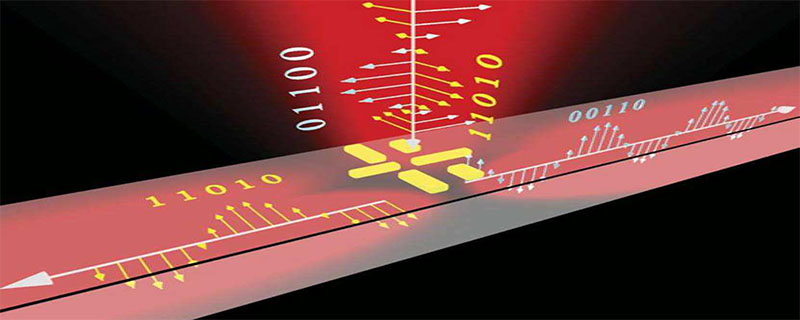data transfer rate unit
Data Transfer Rate is one of the important technical indicators describing the data transmission system. The data transfer rate is numerically equal to the number of bits that make up the data code transmitted per second.

Commonly used data transmission rate units are: Kbps, Mbps, Gbps and Tb/s. Currently, the fastest theoretical transmission rate of Ethernet LAN (also The so-called "bandwidth") is 10Gbit/s.
Among them:
1Kbps=1000 bps
1Mbps= 1000*1000bps
1Gbps=1000*1000* 1000bps
1Tbps= 1000*1000*1000*1000bps
Recommended course: PHP Tutorial.
Data transmission rate calculation formula:
R=(1/T)*log₂N (bps)
where: T is a digital pulse signal The width (full-width code) or repetition period (return-to-zero code), the unit is seconds; a digital pulse is also called a symbol, and N is the number of effective discrete values taken by a symbol, also called the number of modulation levels , N generally takes an integer power value of 2. If a symbol can take two discrete values: 0 and 1, then the symbol can only carry one bit of binary information; if a symbol can take four discrete values: 00, 01, 10, and 11, then the symbol can Can carry two bits of binary information. By analogy, if a symbol can take on N discrete values, then the symbol can carry log₂N bits of binary information. When N=2, the formula of the data transmission rate can be simplified as: R=1/T, which means that the data transmission rate is equal to the repetition frequency of the symbol pulse. From this, another technical indicator can be derived - the signal transmission rate, also known as the symbol rate, modulation rate or baud rate (the unit is baud, recorded as Baud). The signal transmission rate represents the number of symbols transmitted through the channel per unit time, which is the transmission rate of the signal after modulation. If the amount of information contained in each symbol is 1 bit, the baud rate is equal to the bit rate.
Calculation formula: B=1/T (Baud), where T is the width of the signal symbol, in seconds.
From the above two formulas we can get: R=B log₂N (bit/s), or B=R/ log₂N (Baud)
In the computer In , the meaning of a symbol is high and low levels, representing logic "1" and logic "0" respectively, so the amount of information contained in each symbol is exactly 1 bit, so in computer communications, it is often called "bit rate" is the "baud rate", that is:
1 baud (B) = 1 bit (bit) = 1 bit/second (1bit/s)
For example:
The fastest transmission rate of a teletype machine is 10 characters/second. Each character contains 11 binary bits. The data transmission rate is: 11 bits/character × 10 characters/second = 110 Bits/second = 110 baud.
Another way to express the data transmission rate is "bit time" (Td), which refers to the time required to transmit a binary bit, expressed as Td. The computer formula is as follows.
Td = 1/Baud rate = 1/B
For example:
B=110bit/s, then Td = 1/110 ≈ 0.0091 s (9.1ms)
The above is the detailed content of data transfer rate unit. For more information, please follow other related articles on the PHP Chinese website!

Hot AI Tools

Undresser.AI Undress
AI-powered app for creating realistic nude photos

AI Clothes Remover
Online AI tool for removing clothes from photos.

Undress AI Tool
Undress images for free

Clothoff.io
AI clothes remover

Video Face Swap
Swap faces in any video effortlessly with our completely free AI face swap tool!

Hot Article

Hot Tools

Notepad++7.3.1
Easy-to-use and free code editor

SublimeText3 Chinese version
Chinese version, very easy to use

Zend Studio 13.0.1
Powerful PHP integrated development environment

Dreamweaver CS6
Visual web development tools

SublimeText3 Mac version
God-level code editing software (SublimeText3)

Hot Topics
 1386
1386
 52
52


